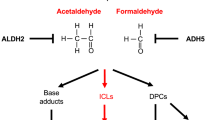Abstract
Cell death was induced by electroporation in HL60 cells, a human promyeloid leukaemia strain, in order to determine by both morphological and biochemical criteria whether necrotic or apoptotic processes occurred. Cells sampled at several times after electroporation were analyzed for the assessment of the following end-points: (i) chromosomal DNA fragmentation; (ii) cell viability; (iii) mono- and oligonucleosomes in the cytoplasmic fraction; (iv) apoptotic index; and (v) morphology of treated cells. The results indicate that about 50% of the cells killed by electroporation die through necrosis, while the remaining 50% of the cells undergo apoptosis. Chromosome damage was also studied by cytogenetic analysis at metaphase. The possibility of killing tumour cells by electroporation, as a variant of electrotherapy, constitutes, in our opinion, a promising procedure in cancer therapy, avoiding the undesirable side effects normally derived from treatment with cytotoxic drugs.
Similar content being viewed by others
References
Chan D-C. Guide to Electroporation and Electrofusion. In: Chang D-C, Chassy M, Saunders J-A, Sowers A-E, ed. San Diego, CA (USA): Academic Press, 1992: 9-25
Mir L-M, Belehradek M, Domege C. Electrochemotherapy, a novel antitumor treatment: first clinical trial. C.R. Paris: Acad Sci Sér III 1991; 313: 613-618.
Belehradek M, Domege C, Louboinski B, Orlowski S, Belehradek J, Mir L-M. Electrochemotherapy, a new antitumor treatment: first clinical phase I-II trial. Cancer 1993; 72: 3694-3700.
Morgan W-F, Ager D, Chung H-W, Ortiz T, Phillips J-W, Winegar R-A. The cytogenetic effects of restriction endonucleases following their introduction into cells by electroporation. In: Wiley-Liss, ed. Mutation and the Environment. Part B. New York, NY (USA): 1990: 355-361.
Ortiz T, Piñero J, Cortés F. Chromosome damage induced by combined treatments with restriction endonucleases introduced into CHO cells by single or double electroporation. Mutation Res 1995; 327: 161-169.
Meaking W-S, Edgerton J, Wharton C-W, Meldrum R-A. Electroporation-induced damage in mammalian cell DNA. Biochim Biophys Acta 1995; 1264: 357-362.
Häkkinen A-M., Laasonen A, Linnainmaa K, Mattson K, Pyrhönen S. Radiosensitivity of mesothelioma cell lines. Acta Oncologica 1996; 35: 451-456.
Hingst O, Blottner S. Quantification of apoptosis (programmed cell death) in mammalian testi by DNA-fragmentation ELISA. Theriogenology 1995; 44: 313-319.
Petkau A, Chelak W-S. Radioprotective effect of superoxyde dismutase on model phospholipid membranes. Biochim Biophys Acta 1976; 433: 445-456.
Ojeda F, Diehl H-A, Folch H. Radiation induced membrane changes and programmed cell death: Possible interrelationships. Scanning Microscopy 1994; 3: 645-651.
Maccarrone M, Bladergroen M-R, Rosato N, Finazzi-Agrò A. Role of lipid peroxidation in electroporation-induced cell permeability. Biochem Biophys Res Commun 1995; 209: 417-425.
Watanabe H, Nagoshi T, Suzuki S, Kobayashi M, Usa M, Inaba H. Chemiluminescence in the crude extracts of soybean seedlings. Postulated mechanism on the formation of hydroperoxide intermediates. Biochem Biophys Acta 1992; 1117: 107-113.
Sandstrom P-A, Pardi D, Tebbey P-W, et al. Lipid hidroperoxide-induced apoptosis: Lack of inhibition by Bcl-2 over-expression. FEBS Lett 1995; 365: 66-70.
Palomba L, Sesteli P, Cattabeni F, Azzi A, Cantoni O. Prevention of necrosis and activation of apoptosis in oxidatively injured human myeloid. FEBS Lett 1996; 390: 91-94.
Author information
Authors and Affiliations
Rights and permissions
About this article
Cite this article
Piñero, J., López-Baena, M., Ortiz, T. et al. Apoptotic and necrotic cell death are both induced by electroporation in HL60 human promyeloid leukaemia cells. Apoptosis 2, 330–336 (1997). https://doi.org/10.1023/A:1026497306006
Issue Date:
DOI: https://doi.org/10.1023/A:1026497306006




